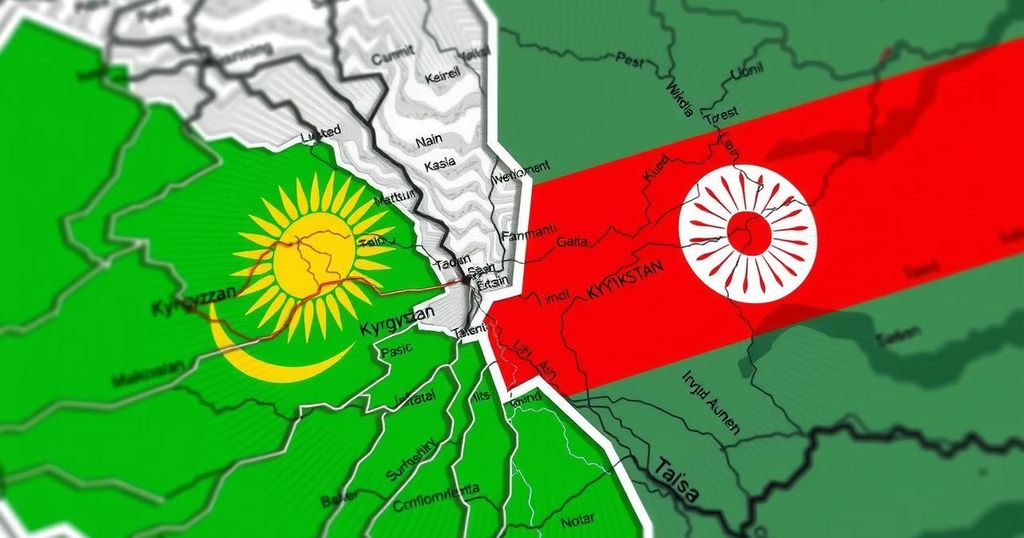Kyrgyzstan and Tajikistan Finalize Historic Border Demarcation Agreement
Kyrgyzstan and Tajikistan have reached a border demarcation agreement on December 4, 2024, effectively resolving their last territorial dispute. The deal, finalized by the nations’ secret service chiefs, follows years of sporadic violent clashes and aims to stabilize relations amidst competing external influences. The agreement emphasizes mutual understanding and cooperation in resource management.
On December 4, 2024, Kyrgyzstan and Tajikistan announced a significant border demarcation agreement, concluding the last contentious frontier issue in Central Asia. This development is a potential resolution to decades marked by territorial disputes and sporadic violence following the dissolution of the Soviet Union. The officials involved in the negotiations included the top secret service chiefs from both nations, who finalized the drawing of the remaining sections of the 970-kilometer border during a meeting held in Batken.
Historically, the border issue derived from Soviet-era administrative decisions, leading to conflicts over essential resources like water, particularly in a climate-sensitive area. The recent agreement followed a period of heightened tensions, notably the violent clashes of autumn 2022, which resulted in significant casualties and displacement of local populations. Positive interactions between Kyrgyz President Sadyr Japarov and Tajik President Emomali Rakhmon at an earlier UN summit had laid the groundwork for bilateral discussions on resolving the border disputes.
The agreement is part of a broader improvement in relations among the Central Asian republics as they navigate the geopolitical landscape, particularly as external influences from countries like China, Turkey, and the European Union emerge. Interestingly, despite Kyrgyzstan requesting Russia’s mediation during the negotiations, there is no indication that Moscow played a direct role in facilitating this recent deal, especially as it remains preoccupied with its ongoing conflict in Ukraine. Nevertheless, this demarcation agreement is a noteworthy step toward regional stability and cooperation, emphasizing the mutual understanding achieved during the talks.
The article addresses the longstanding border disputes between Kyrgyzstan and Tajikistan, stemming from unclear administrative boundaries established during the Soviet era. These disputes have historically resulted in violent confrontations over water resources, an increasingly critical issue in Central Asia, where climate change exacerbates water scarcity. The recent agreement is significant as it marks the end of the last contested border in the region, aiming to foster peace and improve relations between these nations, which were previously tense due to past conflicts and territorial claims. The Improving diplomatic interactions between the Central Asian states and the absence of a direct Russian role in negotiations suggests a shifting geopolitical landscape in the region.
The demarcation deal between Kyrgyzstan and Tajikistan represents a milestone in the resolution of territorial disputes that have plagued Central Asia for decades. It reflects a significant thaw in bilateral relations, enhanced by prior diplomatic engagements. With this agreement, both nations herald a new era of cooperation, addressing critical resource management and fostering regional stability, despite the geopolitical challenges posed by external powers.
Original Source: www.thehindu.com




Post Comment